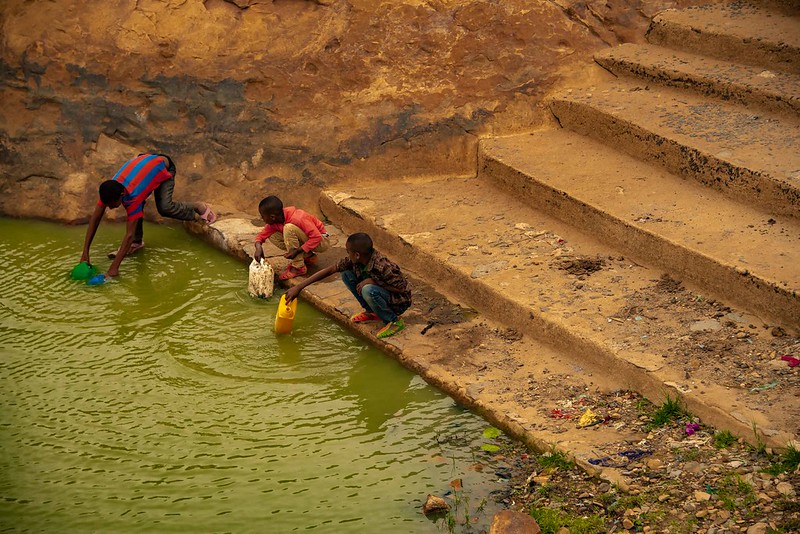 Aida Muluneh is an Ethiopian photographer and cultural entrepreneur. Born in Addis Ababa, Ethiopia, she works as an educator “developing projects with local and international institutions in Ethiopia and Côte d’Ivoire.”
Aida Muluneh is an Ethiopian photographer and cultural entrepreneur. Born in Addis Ababa, Ethiopia, she works as an educator “developing projects with local and international institutions in Ethiopia and Côte d’Ivoire.”
Shining Light on Water Poverty
In 2018, alongside WaterAid and the H&M Foundation, Aida created a series of works focusing on the scarcity of safe water. WaterAid is an NGO established in 1981 to provide clean water and sanitation to people around the world. Its mission is to “transform the lives of the poorest and most marginalized people by improving access to safe water, sanitation and hygiene.”
Founded in 2013, the H&M Foundation is an NGO based in Stockholm, Sweden that uses “philanthropic resources to find, fund and facilitate disruptive innovations, initiatives and research that enable a socially inclusive and planet positive textile industry.” Its website states “We believe that change is best achieved when a diverse group of people join forces and commit to a common agenda to solve complex challenges.”
WaterAid gave Aida “complete artistic freedom” and provided her with “information about the issues around water security, especially in Ethiopia.” The Water Life exhibition developed from a conversation about the pairing of art and advocacy, the issues of access to safe water and the impact that water scarcity had on women and children in Africa.
For the Water Life exhibition, Aida photographed the women in the Afar region in Northern Ethiopia, “one of the hottest and driest places on Earth.” Her goal was to address the issue of water scarcity without the clichés that mainstream media and aid organizations often represent, stating that she realized that “art can be a form of advocacy,” Canon reports.
Water Scarcity
Water scarcity is the lack of sufficient clean water to meet daily demands. Access to fresh drinking water dwindles due to both human factors and extreme weather conditions. Globally, 785 million people do not have access to clean drinking water. Each day more than 800 children die from preventable diseases that poor water causes in many communities around the world. The scarcity of safe water supplies can cause families and their communities to become locked in poverty for generations.
In the past 20 years, “Ethiopia has made remarkable strides in ensuring access to safe drinking water,” USAID reports. However, it continues to “face challenges in overall water, sanitation and hygiene and WASH coverage.” According to USAID, “in Ethiopia, diarrheal disease is the second cause of hospital admission and death among children under 5 years of age.”
Water scarcity affects women and children the most. According to World Vision, children are “more vulnerable to diseases of dirty water” and women and girls ” often bear the burden of carrying water for their families for an estimated 200 million hours each day.”
In Conclusion
Access to safe water and sanitation is a precondition to life and a declared human right. Water is vitally important to sustainable development – from health and nutrition to gender equity and economics. The artistic perspective of Aida Muluneh transitioned from a conversation into a vibrant artistic advocacy addressing the global issue of water scarcity.
Aida intended to create images that showed the challenges of water scarcity and emphasize the strength and resilience of the women who face these daily difficulties framed by the beauty, heritage and culture of the continent. “I could not stop thinking about the time it takes to collect water. Today, and every day, girls and women will spend more than 200 hours walking for water. If a young girl must spend three hours transporting water, whether for cooking feeding, bathing or drinking, that is three hours she could have been in school, getting an education,” Aida wrote for WaterAid.
– Pamela Fenton
Photo: Flickr
The post “Water Life” in Ethiopia appeared first on The Borgen Project.

